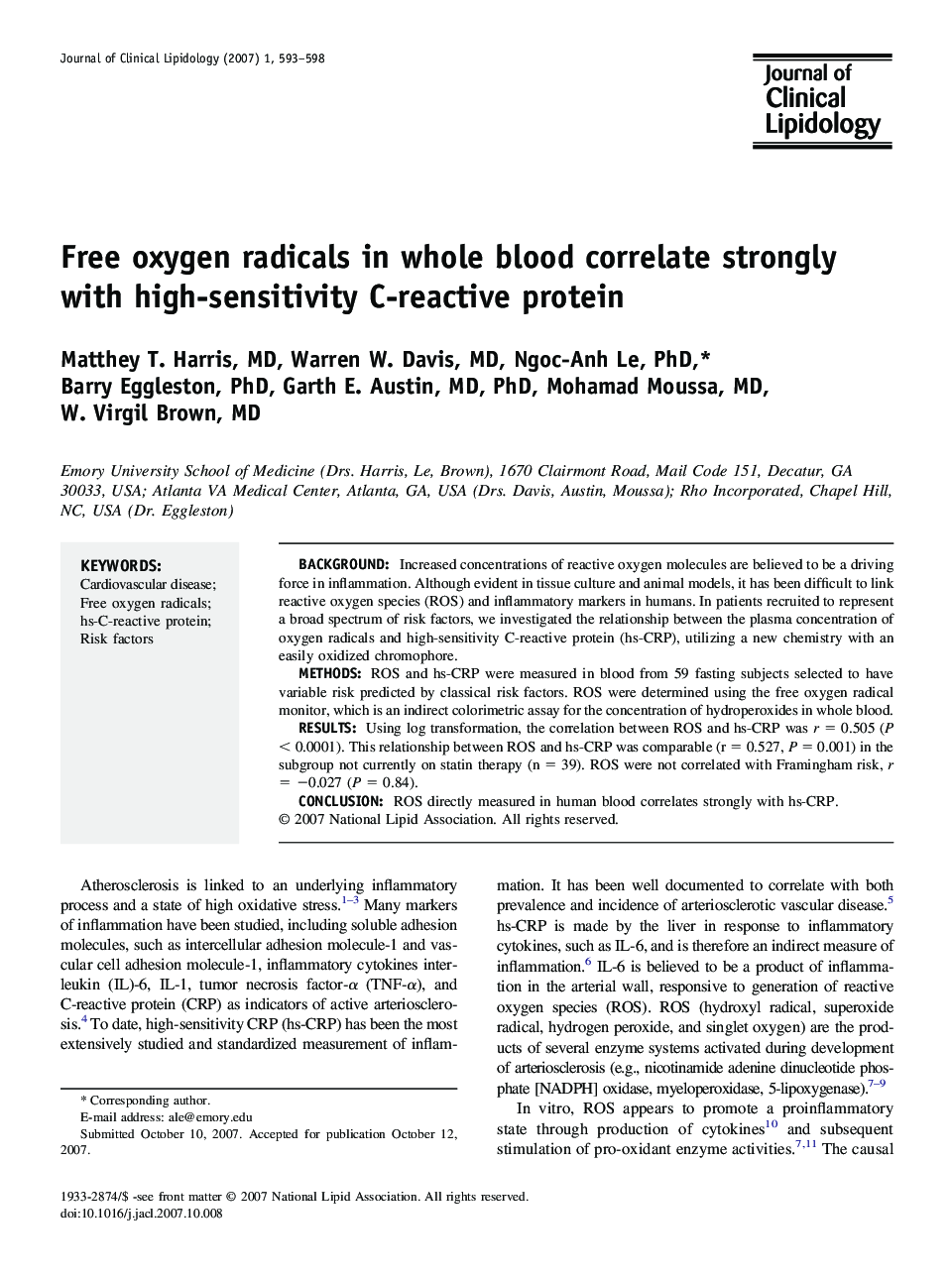| Article ID | Journal | Published Year | Pages | File Type |
|---|---|---|---|---|
| 2966999 | Journal of Clinical Lipidology | 2007 | 6 Pages |
BackgroundIncreased concentrations of reactive oxygen molecules are believed to be a driving force in inflammation. Although evident in tissue culture and animal models, it has been difficult to link reactive oxygen species (ROS) and inflammatory markers in humans. In patients recruited to represent a broad spectrum of risk factors, we investigated the relationship between the plasma concentration of oxygen radicals and high-sensitivity C-reactive protein (hs-CRP), utilizing a new chemistry with an easily oxidized chromophore.MethodsROS and hs-CRP were measured in blood from 59 fasting subjects selected to have variable risk predicted by classical risk factors. ROS were determined using the free oxygen radical monitor, which is an indirect colorimetric assay for the concentration of hydroperoxides in whole blood.ResultsUsing log transformation, the correlation between ROS and hs-CRP was r = 0.505 (P < 0.0001). This relationship between ROS and hs-CRP was comparable (r = 0.527, P = 0.001) in the subgroup not currently on statin therapy (n = 39). ROS were not correlated with Framingham risk, r = −0.027 (P = 0.84).ConclusionROS directly measured in human blood correlates strongly with hs-CRP.
